Goal 4 - Classification
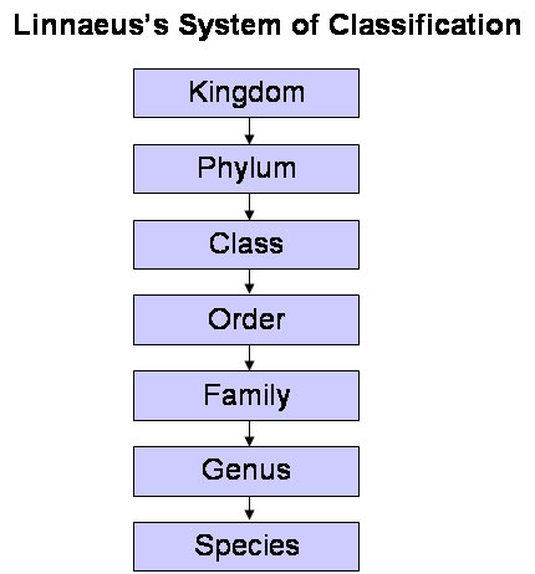
CLASSIFICATION - GOAL 4 Chapter 17 (pages 442-459)
How Classification Began?
Classification began By ancient people that observed nature and had a desire to organize the knowledge gained.
Taxonomy
Taxonomy is a branch of biology concerned with the grouping and naming of organisms
How Classification Began?
Classification began By ancient people that observed nature and had a desire to organize the knowledge gained.
- Classification- the grouping of objects based on similarities
- ex: baseball cards, coins, shoes, etc
Taxonomy
Taxonomy is a branch of biology concerned with the grouping and naming of organisms
- Species – Consist of a group of individuals that can breed and produce fertile offspring.
- Genus – consists of a group of closely related species.
- Family – group of closely related genera.
- Order – group of related families
- Class – group of related orders
- Phylum – group of related classes
- Kingdom – group of related phyla.
Why classify?

Why should we classify?
The need for order and organization
Why is Latin used to name organisms?
It is no longer used by many people, thus it is unchanging
The need for order and organization
- Logical means for naming organisms (common name problem)
- Ease of communication with other scientist (all scientist use Latin to name organisms)
- When new organisms are discovered, categories are already established
Why is Latin used to name organisms?
It is no longer used by many people, thus it is unchanging
- Many modern words are taken from Latin
- It was understood by scientist at the time taxonomy was first developed
- Latin words are very descriptive
The First to Classify - Aristotle
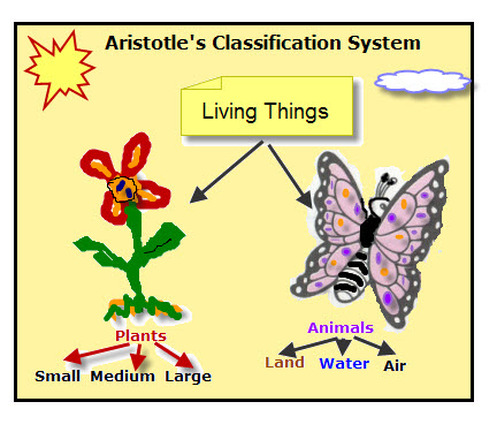
Aristotle
Aristotle was a Greek philosopher (384-322 B.C.) who developed the first widely accepted system of biological classification.
He classified all the organisms he knew into two groups: plants and animals.
He subdivided plants into three groups, herbs, shrubs, and trees, depending on the size and structure of a plant.
He grouped animals according to various characteristics, including their habitat and physical differences. According to his system, birds, bats, and flying insects are classified together even though they have little in common besides the ability to fly.
As time passed, more organisms were discovered and some did not fit easily into Aristotle’s groups, but many centuries passed before Aristotle’s system was replaced.
Aristotle’s System
Plants – 3 groups
Plants (classified based on structure)
Aristotle was a Greek philosopher (384-322 B.C.) who developed the first widely accepted system of biological classification.
He classified all the organisms he knew into two groups: plants and animals.
He subdivided plants into three groups, herbs, shrubs, and trees, depending on the size and structure of a plant.
He grouped animals according to various characteristics, including their habitat and physical differences. According to his system, birds, bats, and flying insects are classified together even though they have little in common besides the ability to fly.
As time passed, more organisms were discovered and some did not fit easily into Aristotle’s groups, but many centuries passed before Aristotle’s system was replaced.
Aristotle’s System
Plants – 3 groups
Plants (classified based on structure)
- herbs-- has (soft) stems
- shrubs-- has several (woody) stems
- trees-- has one main (wood) trunk
- Animals – 3 groups
- living on land
- living in water
- living in air
Linnaeus
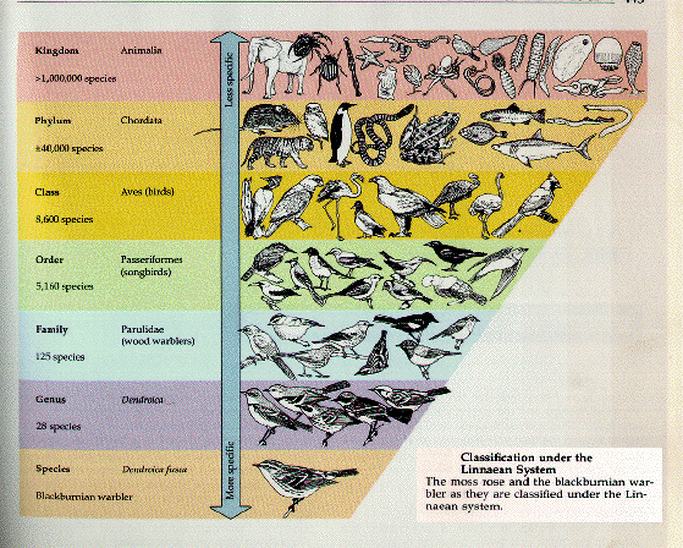
Linnaeus’s System
In the late eighteenth century, a Swedish botanist, Carolus Linnaeus (1707--1778), developed a method of grouping organisms that is still used by scientists today..
Eventually, some biologists proposed that structural similarities reflect the evolutionary relationships of species (cladistics).
Linnaeus’s System of Binomial Nomenclature
Modern classification systems use a two--word naming system called binomial nomenclature that Linnaeus developed to identify species.
Some Examples of Binomial Nomenclature
Rules for writing a scientific name:
In the late eighteenth century, a Swedish botanist, Carolus Linnaeus (1707--1778), developed a method of grouping organisms that is still used by scientists today..
- Linnaeus's system was based on physical and structural similarities of organisms.
- As a result, the groupings revealed the relationships of the organisms.
Eventually, some biologists proposed that structural similarities reflect the evolutionary relationships of species (cladistics).
- This was of organizing organisms is the basis of modern classification systems.
Linnaeus’s System of Binomial Nomenclature
Modern classification systems use a two--word naming system called binomial nomenclature that Linnaeus developed to identify species.
- In this system, the first word identifies the genus of the organism.
- A genus(JJEE nus) (plural, genera) consists of a group of similar species.
- The second word, which sometimes describes a characteristic of the organism, is called the specific epithet.
- Thus, the scientific name for each species, referred to as the species name, is a combination of the genus name and species (specific epithet) - Homo sapiens
Some Examples of Binomial Nomenclature
- Homo sapien - human
- Felis domesticus - house cat
- Felis tigris - Asian tiger
- Felis concolor - cougar, Mt. Lion, panther.
- Canis lupus - Boa constrictor
- Gorilla gorilla- gorilla
- Canis familaris -dog
- Mus musculus -house mouse
- Felis leo - African lion
Rules for writing a scientific name:
- The genus is written first and is capitalized
- The species name is written next and is not capitalized
- Both words are underlined separately or italicized
Scientific vs Common Names
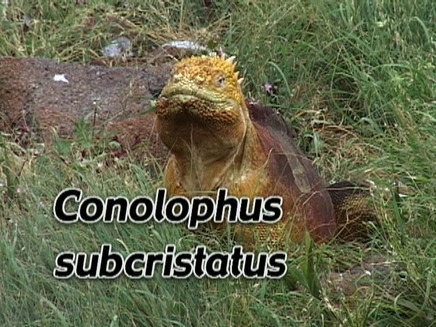
Scientific Names vs. Common Names
Taxonomists are required to use Latin because the language is no longer used in conversation and, therefore, does not change.
Many organisms have common names. However, a common name can be misleading. For example,a sea horse is a fish,not a horse.
Taxonomists are required to use Latin because the language is no longer used in conversation and, therefore, does not change.
- Scientific names should be italicized in print and underlined when handwritten.
- The first letter of the genus name is uppercase, but the first letter of the specific epithet is lowercase. à Passer domesticus
Many organisms have common names. However, a common name can be misleading. For example,a sea horse is a fish,not a horse.
- In addition, it is confusing when a species has more than one common name.
Modern Classification
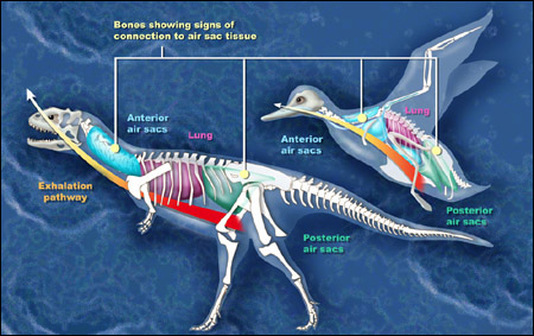
Modern Classification
Expanding on Linnaeus's work, today's taxonomists try to identify the underlying evolutionary relationships of organisms and use the information gathered as a basis for classification
Grouping organisms on the basis of their evolutionary relationships makes it easier to understand biological diversity.
Taxonomy: A framework
Taxonomists group similar organism, both living and extinct. Classification provides a framework in which to study the relationships among living and extinct species.
Taxonomy: A useful Tool
Classifying organisms can be a useful tool for scientists who work in agriculture, forestry, and medicine
Taxonomy and the Economy
It often happens that the discovery of new sources of lumber, medicines, and energy results from the work of taxonomists.
How living things are classified
In any classification system, items are categorized, making them easier to find and discuss.
Taxonomic Rankings
Organisms are ranked in taxa that range from having very broad characteristics to very specific ones.
Complete Classification Of Man
Kingdom……………Animalia
Phylum………………Chordata((backbone)
Class…………………Mammalia
Order…………………Primates
Family……………… Hominids
Genus…………………Homo
Species ………………sapiens
Subspecies
Members of different subspecies of a species can interbreed and produce fertile offspring.
Are there subspecies of Homo sapiens? YES…....5
5 Subspecies of Man
Mongoloid…….Asian descent (largest number of humans)
Negroid……….African descent (all others races are thought to be descendants of this race)
Caucasoid……European descent
Australoid……Australian aboringes
Amerinds…….native Americans (Incas, Aztecs, Apache)
Expanding on Linnaeus's work, today's taxonomists try to identify the underlying evolutionary relationships of organisms and use the information gathered as a basis for classification
Grouping organisms on the basis of their evolutionary relationships makes it easier to understand biological diversity.
Taxonomy: A framework
Taxonomists group similar organism, both living and extinct. Classification provides a framework in which to study the relationships among living and extinct species.
- For example, biologists study the relationship between birds and dinosaurs within the framework of classification.
Taxonomy: A useful Tool
Classifying organisms can be a useful tool for scientists who work in agriculture, forestry, and medicine
- Anyone can learn to identify many organisms using a dichotomous key.
- A key is made up of sets of numbered statements. Each set deals with a single characteristic of an organism, such as leaf shape or arrangement.
Taxonomy and the Economy
It often happens that the discovery of new sources of lumber, medicines, and energy results from the work of taxonomists.
- The characteristics of a familiar species are frequently similar to those found in a new, related species.
- For example, if a taxonomist knows that a certain species of pine tree contains chemicals that make good disinfectants, it's possible that another pine species could also contain these useful substances.
How living things are classified
In any classification system, items are categorized, making them easier to find and discuss.
- Although biologists group organisms, they subdivide the groups on the basis of more specific criteria.
- A group of organisms is called a Taxon (Plural, Taxa)
Taxonomic Rankings
Organisms are ranked in taxa that range from having very broad characteristics to very specific ones.
- The broader a taxon, the more general its characteristics, and the more species it contains.
- The smallest taxon is species. Organisms that look alike and successfully interbreed belong to the same species.
- The next largest taxon is a genus—a group of similar species that have similar features and are closely related.
Complete Classification Of Man
Kingdom……………Animalia
Phylum………………Chordata((backbone)
Class…………………Mammalia
Order…………………Primates
Family……………… Hominids
Genus…………………Homo
Species ………………sapiens
Subspecies
Members of different subspecies of a species can interbreed and produce fertile offspring.
Are there subspecies of Homo sapiens? YES…....5
5 Subspecies of Man
Mongoloid…….Asian descent (largest number of humans)
Negroid……….African descent (all others races are thought to be descendants of this race)
Caucasoid……European descent
Australoid……Australian aboringes
Amerinds…….native Americans (Incas, Aztecs, Apache)
Dichotomous Key
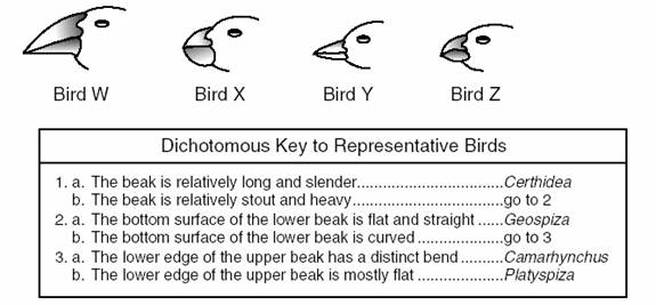
Dichotomous Key
A dichotomous key is an organized set of couplets of mutually exclusive characteristics of biological organisms.
A dichotomous key is an organized set of couplets of mutually exclusive characteristics of biological organisms.
- You simply compare the characteristics of an unknown organism against an appropriate dichotomous key.
- These keys will begin with general characteristics and lead to couplets indicating progressively specific characteristics.
- If the organism falls into one category you go to the next indicated couplet. By following the key and making the correct choices, you should be able to identify your specimen to the indicated taxonomic level.
Cladogram
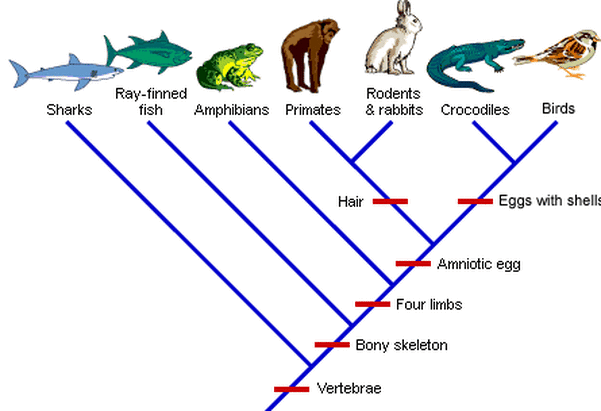
Phylogenetic Classification Models
The evolutionary history of a species is called phylogeny.
Cladograms
The evolutionary history of a species is called phylogeny.
- A classification system that shows the evolutionary history of species is a phylogenetic classification, and reveals the evolutionary relationships of species.
- Cladistics – Scientist that use Cladistics assume that as groups of organisms diverge and evolve, they retain some unique inherited characteristics that taxonomists call derived traits.
Cladograms
- A cladogram is a model of phylogeny of a species.
- An important difference between Cladograms and pedigrees is that, whereas pedigrees show the direct ancestry of an organism from two parents, cladograms show a probable evolution of a group of organisms from ancestral groups.
The Six Kingdoms
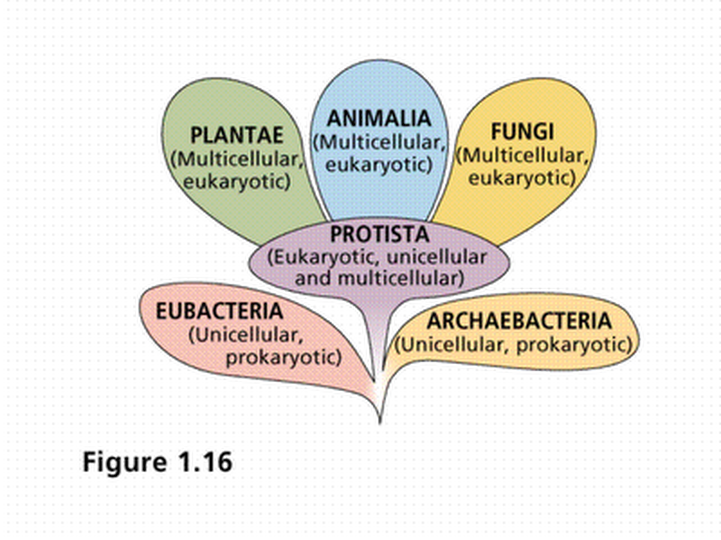
Another Type of Model
One type of model resembles a fan.
Eubacteria
Archaebacteria
Protists
Fungi
Plants
Animals
Prokarytes
The prokaryotes, organisms with cells that lack distinct nuclei bounded by a membrane, are microscopic and unicellular.
There are two kingdoms of prokaryotic organisms: Archaebacteria and Eubacteria
There are several hundred species of known archaebacteria and most of them live in extreme environments such as swamps, deep-ocean hydrothermal vents, and seawater evaporating ponds.
All of the other prokaryotes, about 5000 species of bacteria, are classified in Kingdom Eubacteria.
Protists : A Diverse Group
Kingdom Protista contains diverse species that share some characteristics.
A protist is a eukaryote that lacks complex organ systems and lives in moist environments.
Although some protists are unicellular, others are multicellular.
Some are plantlike autotrophs (makes its own energy), some are animal-like heterotrophs (gets energy from other organisms), and others are fungus-like heterotrophs that produce reproductive structures like those of fungi.
Fungi-Earth’s Decomposers
Organisms in Kingdom Fungi are heterotrophs that do not move from place to place.
Plants: Multicellular Oxygen Producers
All of the organisms in Kingdom Plantae are multicellular, photosynthetic eukaryotes.
Animals: Multicellular Consumers
Animals: Multicellular consumers
One type of model resembles a fan.
- Unlike a cladogram, a fanlike model may communicate the time organisms became extinct or the relative number of species in a group.
- A fanlike diagram incorporates fossil information and the knowledge gained from anatomical, embryological, genetic, and cladistic studies.
Eubacteria
Archaebacteria
Protists
Fungi
Plants
Animals
Prokarytes
The prokaryotes, organisms with cells that lack distinct nuclei bounded by a membrane, are microscopic and unicellular.
- Some are heterotrophs and some are autotrophs.
- Autotrophs – organisms that make their own food
- Heterotrophs – organisms that eat other organisms for nourishment.
- Some prokaryotic autotrophs are chemosynthetic (chemosynthetic organisms get their energy from chemical reactions), whereas others are photosynthetic (organisms that get their energy from the sun).
There are two kingdoms of prokaryotic organisms: Archaebacteria and Eubacteria
There are several hundred species of known archaebacteria and most of them live in extreme environments such as swamps, deep-ocean hydrothermal vents, and seawater evaporating ponds.
- Most of these environments are oxygen-free.
All of the other prokaryotes, about 5000 species of bacteria, are classified in Kingdom Eubacteria.
- Eubacteria have very strong cell walls and a less complex genetic makeup than found in archaebacteria or eukaryotes
- They live in most habitats except the extreme ones inhabited by the archaebacteria.
- Although some eubacteria cause diseases, such as strep throat and pneumonia, most bacteria are harmless and many are actually helpful - Streptoccous
Protists : A Diverse Group
Kingdom Protista contains diverse species that share some characteristics.
A protist is a eukaryote that lacks complex organ systems and lives in moist environments.
Although some protists are unicellular, others are multicellular.
Some are plantlike autotrophs (makes its own energy), some are animal-like heterotrophs (gets energy from other organisms), and others are fungus-like heterotrophs that produce reproductive structures like those of fungi.
Fungi-Earth’s Decomposers
Organisms in Kingdom Fungi are heterotrophs that do not move from place to place.
- A fungus is either a unicellular or multicellular eukaryote that absorbs nutrients from organic materials in the environment.
- There are more than 50,000 known species of fungi.
Plants: Multicellular Oxygen Producers
All of the organisms in Kingdom Plantae are multicellular, photosynthetic eukaryotes.
- None moves from place to place.
- A plant’s cells usually contain chloroplasts and have cell walls composed of cellulose.
- Plant cells are organized into tissue that, in turn, are organized into organs and organ systems.
- The oldest plant fossils are more than 400 million years old.
- However, some scientists propose that plants existed on Earth’s landmasses much earlier than these fossils indicate.
- There are more than 250,000 known species of plants.
- Although you may be most familiar with flowering plants, there are many other types of plants, including mosses, ferns, and evergreens.
Animals: Multicellular Consumers
Animals: Multicellular consumers
- Animals are multicellular heterotrophs.
- Nearly all are able to move from place to place.
- Animal cells do not have cell walls.
- Their cells are organized into tissues that, in turn, are organized into organs and complex organ systems.
- Animals first appeared in the fossil record about 600 million years ago.
